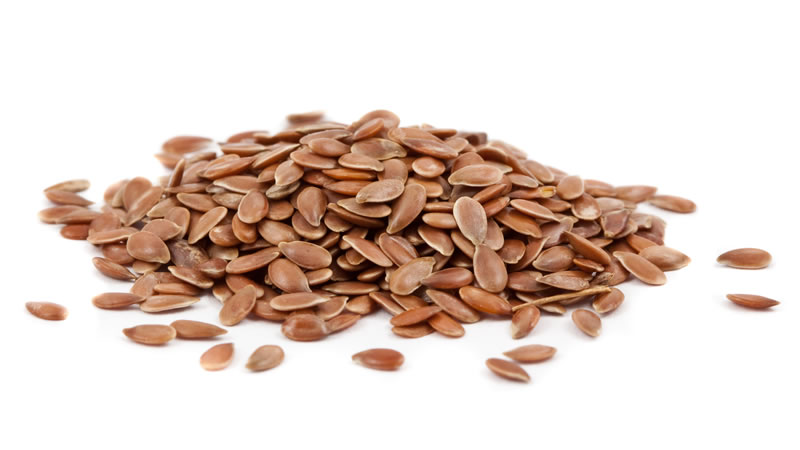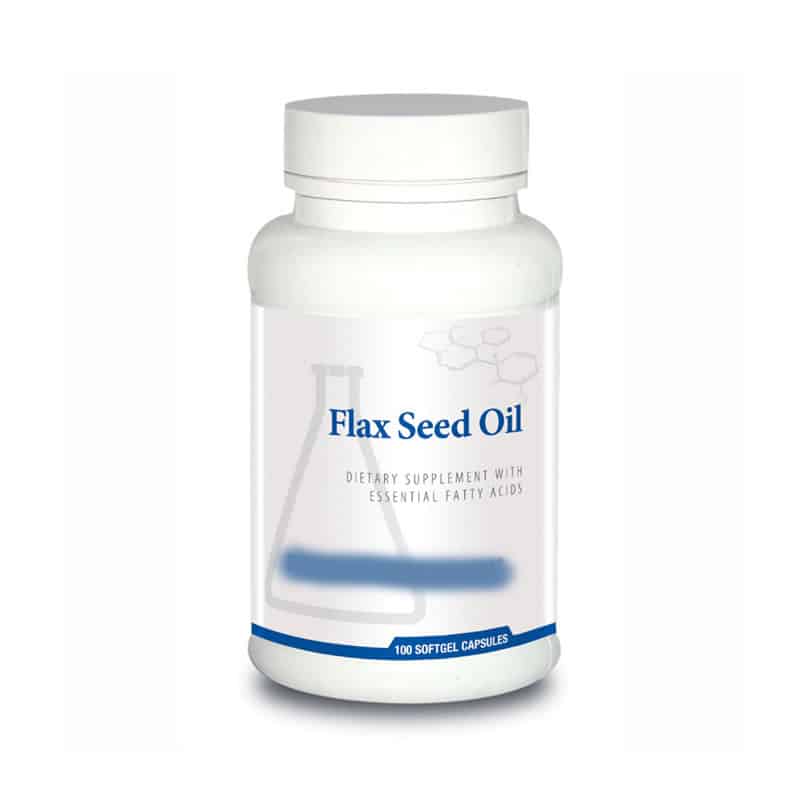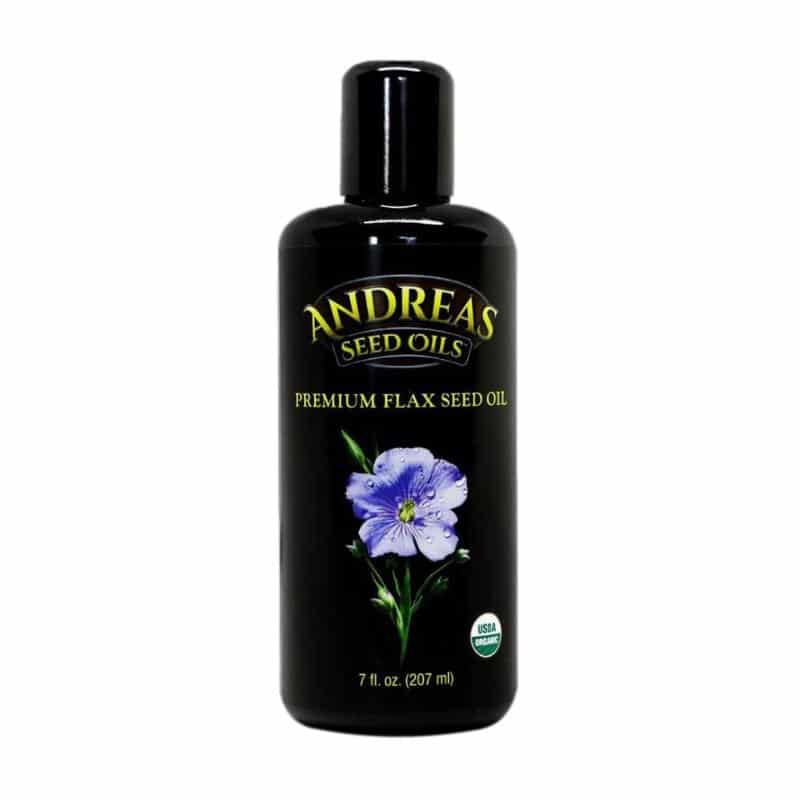No products in the cart.
Flax Hull Lignans Research
Lignans are a group of phytonutrients (plant nutrients) found in seeds, grains and vegetables.
Flax seeds are the richest source of the lignan known as SDG (secoisolariciresinol diglucoside). This phytonutrients is classed as a polyphenol.
Research indicates that SGD metabolites may provide benefits from antioxidant activity. They also have the ability to induce phase 2 proteins (promote healthier aging).
Other sources of lignans (rye, buckwheat, millet, soya, barley) contain 2-6mcg of lignans per gram (mcg/g) of grain. Flax seed yields 800 mcg/g.
Flax seed’s essential fatty acids are in the oil. The lignans are in the fiber hull of the seed. The oil has little or no lignans.
Medicinal Value of Lignans
Lignans have numerous biological properties that make them unique and very useful in promoting health and combating various diseases. Up until recent times, SDG existed in such small concentrations that no one was aware of its miraculous qualities. While the oil of flaxseed is a big percentage of the seed, the SDG lignan methods have brought to light the tremendous health benefits associated with lignans.
Since the 1980’s lignans have come under scientific scrutiny after studies indicated that they many interfere with the development of breast, prostate, colon, and other cancer. Research has shown that people who excrete high amounts of lignans in their urine have notably lower cancer rates.
These lignan compounds have shown such extraordinary potential that they have been studied by the National Cancer Institute for their cancer preventative properties. The SDG lignans have anticancer properties, and are a potent antioxidant shown to enhance immune system functioning.
Lignans provide certain health benefits in part because they are considered to be “phytoestrogens.” These are plant chemicals that mimic the hormone estrogen. Studies indicate that people who eat more lignan-containing foods have lower incidence of breast and colon cancer, due to the phytoestrogen effect. The mounting scientific evidence shows how important it is to consume a lignan-rich diet.
The first interest in biological activity of SDG arose in the early 1980’s when investigators reported that the level of lignans in the body were lower in patients with breast cancer than in tumor free patients. It was also noted that vegetarians had higher concentrations of lignan substances than non-vegetarians. There are two general types of lignans: 1) those found in plants and 2) those found in animals and humans or “mammalian lignans.” When the plant lignan SDG (from flaxseed) is ingested, it is converted in the colon by bacteria to the mammalian lignans enterodiol (ED) and enterolactone (EL). Many studies have shown the important health benefits that exist due to this conversion of flax lignan in the body.
Flaxseed lignan was discovered in 1956.
About Lignan Products
Since 1995, several health products have come into the marketplace with the word “lignan” on the label. Several flax oil products claim to contain lignans. They have names like “high Lignan Flax Seed Oil.” When these products were tested it was found they contained practically no lignans at all. That is to be expected since the lignans are not in the oil. Other flax oil products state they contain a certain percentage of lignan particulates such as “20% lignan particulates.” This does not mean it contains 20% lignans. This means that 20% of the product is made up of pieces of the flax fiber shell which contains the lignans.
But since the fiber meal consists of about 1.6% lignans, such a product would contain only .35% Lignans. Further, if such a product is in liquid form (in the bottle), the particulates will settle to the bottom. Thus no lignans are consumed until the end of the product’s use. Another product says it has “up to 30% more lignans that the whole flax seed.” This is essentially a product consisting mostly of the defatted flax fiber without the oil. There is no concentration or extract of lignans. Such a product would thus contain about 1.6% lignans, which is the highest level of lignans currently available.
Health product companies have tried to capitalize on the tremendous health benefits of lignans by offering lignan products. They have been able to get the word “lignan” on the label, but little of it in the product. Some of these flax products advertise that flaxseed has 100 to 800 times more lignans than other plant sources. This sounds impressive but they do not say how little lignan there actually is in a flax seed: just 1%. If it is a flax oil product, it does not matter anyway, since less than 2% of the lignans are in the oil. The difficulty in separating SDG lignan from flaxseed lies in the fact that the flaxseed hulls, which contain the lignan, adhere tightly to the seed.
Therefore, obtaining a pure SDG product has not been economically viable. The University of Toronto developed an SDG extraction process using chemicals such as methanol, petroleum ether, chloroform, sodium methoxide and sulfuric acid. The method is not very desirable due to trace chemicals leeching into the lignans. Another Method uses an alkaline alcohol process followed by flash chromatography. The yield, however, is rather low.
SDG Flax Hull Lignans Research
Researchers are exploring the benefit of SDG (secoisolariciresinol diglucoside) Flax Lignan Concentrate in health applications including kidney disorders, melanoma, colon cancer, breast cancer, tumors, heart disease, AIDS and others. They have studied its effects on hormones related to tumors, the immune system, aging and heart disease. Reactive oxygen species (ROS) have been implicated in the development of diabetes mellitus. SDG isolated from flaxseed is an antioxidant. An investigation was made of the effects of SDG on the development of diabetes in rats, to determine if SDG can prevent/reduce the development of diabetes and if this prevention/reduction is associated with reduction in oxidative stress.
RESULTS: SDG prevented the development of diabetes by 75%.(Prasad K, et a, Mol Cell Biochem, 206(1-2): 2000; Prasad K. Mol Cell Biochem, 209 (1-2): 89.2000).
Flaxseed SDG may have a therapeutic role in lupus nephritis. (Clark W. et al Lupus, 9(6): 429, 2000).
Plant Lignans may contribute to lower incidence of prostate cancer. (eur Urol, 35(5-6): 377, 1999)
Asian men have a much lower incidence of prostate cancer and possibly of benign prostatic hyperplasia (BPH) than Western counterparts. Vegetarian men have a lower incidence of prostate cancer than omnivorous males.
Flaxseed supplementation is effective in reducing cholesterol, therefore preventing hypercholesterolemia-related heart attack and strokes. (Ogborn, M et al, Kidney Int. 55(2): 417, 1999.
A test involving consumption of 50 grams of flaxseed a day revealed a 30% increase in bowel movements per week. Cunnan, S.C., et al., “Nutritional Attributes of Traditional Flaxseed in Health Young Adults,” Am. Journ. Of Clinical Nutr., 1995, 61:62-68
Plant lignans give rise to the mammalian lignans, enterodiol and enterolactone; the richest source is linseed (flaxseed). In addition to their estrogenic activity, these plant compounds can interfere with steroid metabolism and bioavailability, and also inhibit enzymes, such as tyrosine kinase and topoisomerase, which are crucial to cellular proliferation and hence may contribute to lower incidences of prostate cancer. (Eur Urol, 35(5-6): 377, 1999).
Dietary estrogens, such as lignan-rich flaxseed, are similar in structure to endogenous sex steroid hormones and act in vivo to alter hormone metabolism and reduce subsequent cancer risk in postmenopausal women. (Hutchins A, Cancer Epidemiol Biomarkers Prev, 9(10): 1113, 2000).
Research suggests that SDG reduces hypercholesterolemic atherosclerosis and that this effect is associated with a decrease in serum cholesterol, LDL-C, and lipid peroxidation product and an increase in HDL-C and antioxidant reserve. (Prasad K. Circulation, 99(10): 1355, 1999).
Phytoestrogens are diphenolic compounds that are present in several plants eaten by human beings. Flaxseed is a particularly abundant source of phytoestrogens. When ingested in relatively large amounts, phytoestrogens have been shown to have significant estrogen agonists/antagonists effects in animals and humans.
There is epidemiological, laboratory and clinical evidence which indicates that phytoestrogens, like certain selective estrogen receptor modulators, have an antiproliferative effect on the breast, and positive effects on the lipoprotein profile and bone density. They might also improve some of the climacteric symptoms. (Brzezinski A & Bebi A. Eur J Obstet Gynecol Reprod Biol. 85(1): 47, 1999).
Flaxseed is high in secoisolariciresinol diglycoside (SDG), the precursor of mammalian lignans, which can affect mammary gland structure. Lifetime or gestation and lactation exposure to 5 or 10% flaxseed induce structural changes in the mammary gland that may potentially reduce mammary cancer risk. (Tou J & Thompson L. Carcinogenesis, 20(9): 1831, 1999).
Flaxseed and SDG, regardless of dose, appeared to delay the progression of MNU-induced mammary tumorigenesis. (Rickard S. et al, Nutr Cancer; 35(1): 50, 1999).
Because flaxseed and its lignans are colon cancer protective, it is concluded that, in contrast to other studies, beta-glucuronidase activity may play a beneficial role in their presence by increasing mammalian lignan absorption and enterohepatic. (Jenab M, et al, Nutr Cancer, 33(2): 154, 1999).
Dietary supplementation with secoisolariciresinol diglycoside (SDG), a lignan precursor isolated from flaxseed, significantly reduced pulmonary metastasis cells and inhibited the growth of metastatic tumors that formed in the lungs. (Li D. et al, Cancer Lett, 142(1): 91, 1999).
Flaxseed the richest source of lignans reduces metastasis and inhibits the growth of the metastatic secondary tumors in animals. Flaxseed may be a useful nutritional adjuvant to prevent melanoma metastasis in cancer patients. (Yan L, et al, Cancer Lett, 124(2): 181, 1998).
Flaxseed contains lignans that have antioxidant activities and inhibit platelet-activating factor (PAF). Pretreatment with flaxseed attenuated emdotoxin induced cardiac dysfunction and cellular damage.
Flaxseed antioxidant and anti-PAF agents may be effective in the treatment of ET shock. (Pattanaik U & Prasad K, J Cardiovasc Pharmacol Ther, 3(4): 305. 1998).
The mammalian lignans enterolactone (EL) and enterodiol (ED) derived from precursors in foods, particularly flaxseed, have been shown to reduce the mammary tumor growth due to their antiestrogenic properties.
Lignans are growth inhibitors of colon tumor cells and they may act through mechanism(s) other than antiestrogenic activity. (Sung M, et al, Anticancer Res 18(3A: 1405, 1998).
Flaxseed, the richest source of mammalian lignan precursors, such as secoisolariciresinol diglycoside (SD), has been shown over the short term to decrease some early markers of colon cancer risk.
This study determined that flaxseed has a colon cancer protective effect, that it is due, in part to SD and that the protective effects of flaxseed is associated with increase beta-glucuronidase activity. (Jenab M & Thompson L, Carcinogenesis, 17:1343, 1996).
Flaxseed, a rich source of mammalian lignan precursor secoisolariciresinol-diglycoside _SD) and alpha-linolenic acid (ALA), has been shown to be protective at the early promotion stage of carcinogensis.
In conclusion, the SD lignans in flaxseed appears to be beneficial throughout the promotional phase of carcinogenesis whereas the oil components is more effective at the stage when tumors have already been established. (Thompson L, et al, Carcinogenesis, 17:1373, 1996).
Flaxseed lignans have antitumor, antimitotic, antioxidant and weak estrogenic activity, are potentially the richest source of phytoestrogens in the human diet and may be linked to a low incidence of breast and colon cancer.
Secoisolariciresinol was discovered to be a very potent antioxidant similar to BHA. No toxicity was found in the lignans. (Obermeyer W, et al (US Food and Drug Administration, center for Food Safety and Applied Nutrition, Div. Contaminants Chem., Natural Products Branch).
Meeting Of The Federation Of American Societies For Experimental Biology On Experimental Biology March/April, 1993, Faseb J (Fed Am Soc Exp Biol), A863, 1993) Vitamin E-deficient diets containing 5 to 20% ground flaxseed protected mice against the malarial parasite Plasmodium voelii as shown by decreased parasitemia and enhanced survival. (Levander O, et al, [USDA/ARS Human Nutrition Research Center, Vitamin Mineral Nutrition Laboratory], Nutrition Research, 11, 1991).







